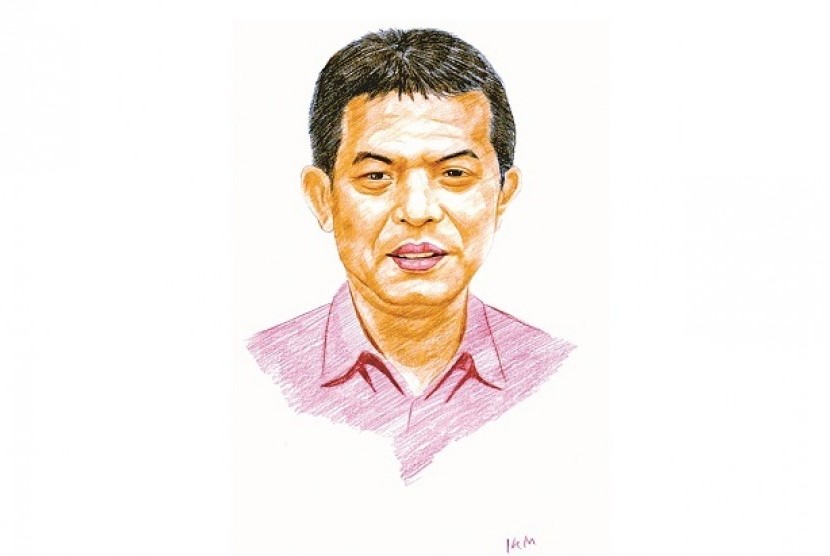REPUBLIKA.CO.ID, By: Ikhwanul Kira Mashuri
In modern history of the Kingdom of Saudi Arabia, the petro dollar country appointed Prince Muqrin bin Abdul Aziz as a vice crown prince (waliyyun liwaliyyil 'ahdi) for the first time on March 27, 2014. Prince Muqrin is the third man in power at the hierarchy after King Abdullah and Crown Prince Salman bin Abdul Azis.
The appointment of third person in the hierarchy power in Saudi Arabian Kingdom aimed to prevent the growing of political speculation that potential to be a bad rumour. This bad rumour could disrupt political stability, security, economic and social stability, not only in Arabian countries but also in Middle East region.
Moreover, Saudi Arabia is now virtually surrounded by uncertainties occurred in almost all regions in Middle East. Civil revolution (Al Rabi' Al Araby) has led to political turmoil in Egypt, Yemen, Libya and others. Armed conflict in Syria has killed hundreds of thousands people and causing millions of people run from their countries.
Political conflicts continue in Lebanon, while Iraq suicide bombings are almost coloring people's everyday lives. Palestinian people continue to face Israeli aggression.
These uncertainty situations are used by hard-line groups to spread its influences in various countries, not only in conflict regions, but also monarchy countries that have more stable political situations, including Saudi Arabia. The hard-line groups could threaten that regime. That is why Saudi Arabian King issued a regulation that threatened its citizen, who was involved with terrorist group with several sanctions.
Saudi government's decisive action was not only to show its role in Middle East region, but also to give a sense of security to Muslims around the world who would perform Hajj pilgrimage and umrah. We cannot imagine if Saudi Arabia experiences the same turmoil and the power struggle, which take place in Syria, Egypt, Yemen, Libya and others.
However, the threat to Saudi Arabia is not only from outside country, but the ruling family. Unlike other countries, such as Morocco, Jordan, Qatar and others that have transparent successions, transfer of power in Saudi Arabia is still dark. It contains a puzzle, including in Saudis themselves.
Transfer of power in Saudi Arabia is usually carried out when the king or crown prince dies. When the king dead, the crown prince will replace him. The new king will choose the new crown prince. When the crown prince dies, the king will appoint the replacement. However, this is not an automatic succession from father to son or from brother to young brother. This succession is more based on competency after someone was successful in various strategic positions.
When King of Abdul Azis Al Saud - the founder and the first king of Saudi Arabian Kingdom - dead, the crown prince who was his son, Saud bi Abdul Azis replaced him. However, when he died, the successor was not his son, but his brother, Faisal, third son of Abdul Azis. Faisal then was replaced by his brother, Khalid, the fifth children of Abdul Azis. Khalid was replaced by Fahd, the eighth son of Abdul Azis and then Fahd was replaced by Abdullah, the tenth son of Abdul Azis.
Abdullah then appointed the crown prince, Salman, the 25th son of Abdul Azis. Before Salman, the Saudi king actualy has appointed Prince Sultan (the 12th son of Abdul Azis) and Nayef (the 23th son of Abdul Azis) as potential successors. However, both of them died while they were still crown princes.
It was not clear what exactly was behind the appointment of third person in the hierarchy of Saudi Arabia for the first time. To be sure, King Abdullah is now 89 years and Prince Salman is 78 years, while Prince Muqrin is 69 years. Muqrin was the 35th son and the last surviving son of Abdul Azis.
Al Sharq Al Awsat, a local media wrote that succession of power was part of internal affairs of big family of Saudi Arabian Kingdom (Baitu al Hukmi al Saudy). They are the most responsible for the continuity and unity of extended family. The head of household is King Abdullah. "With the appointment of Prince Muqrin bin Abdul Azis as vice crown prince, King Abdullah have run his duties to big family, the nation and the Kingdom of Saudi Arabia."
The appointment of Prince Muqrin was an initiative of King Abdullah approved by Crown Prince, Salman. King Abdullah then asked the opinion of royal society named Haiatu Al Bai'ah (Allegiance Council). In an official statement, more than two-thirds of members agreed with Prince Muqrin appointment as vice crown prince. This appointment is then followed by a joint statement among leaders and representatives of tribes in Saudi Arabia.
Haiatu al Bai'ah is a royal institution formed by King Abdullah eight years ago. This institution consists of core family members, which are already senior members. It aims to ensure the power succession in Saudi Arabia to run safely and smoothly.
The existence of this institution is important because Abdul Azis, the founder of kingdom, have many children from dozens of his wives. It was estimated that the King has 22 wives and 45 children. Other information said that the King has 52 children consisted of 36 sons and 16 daughters. Each of Abdul Azis's children has 10 sons and 10 daughters from four wives. Another source reported that each son had eight wives. We can estimate that how many Abdul Azis's grandchildren today.
So far, transfer of power among Abdul Azis' second generation has been running smoothly. There is a great concern, how the ruling family arranges the power succession when the third generation comes. Moreover, Prince Muqrin, the third figure in the Kingdom's hierarchy was already 69 years and the last son of Abdul Azis.



